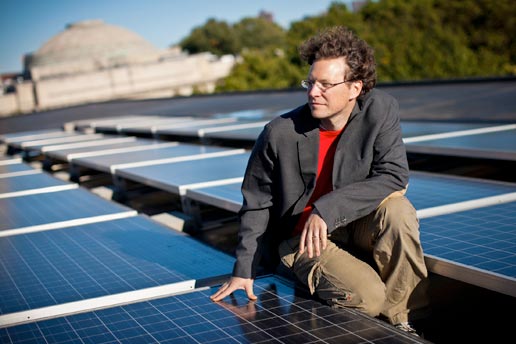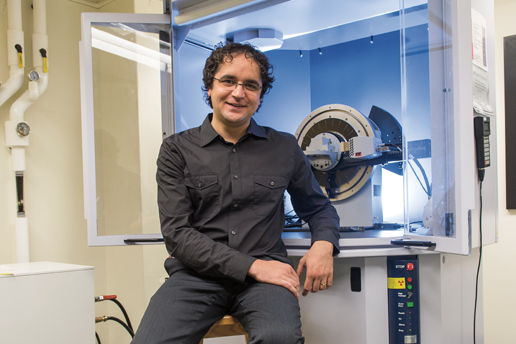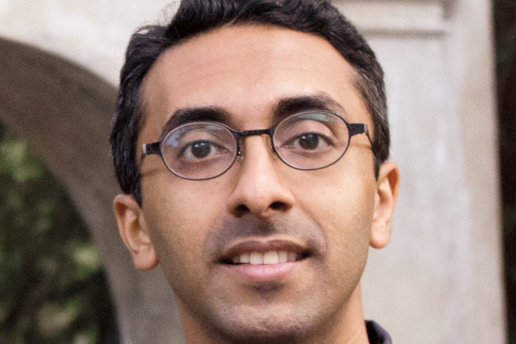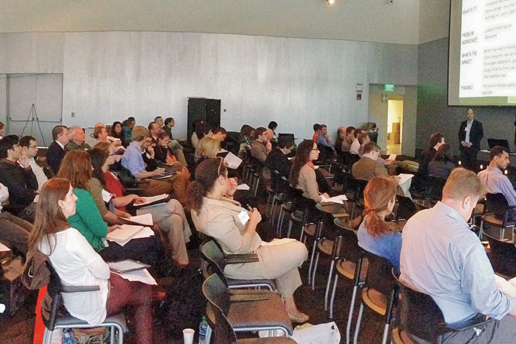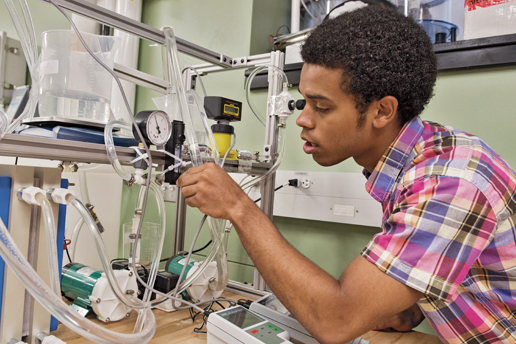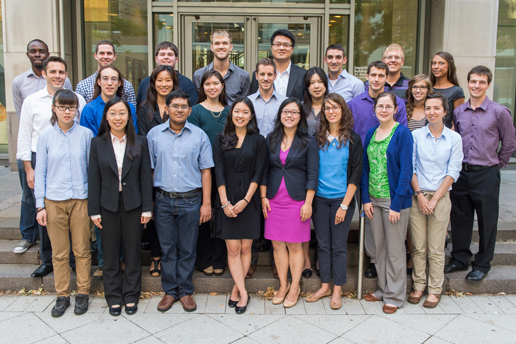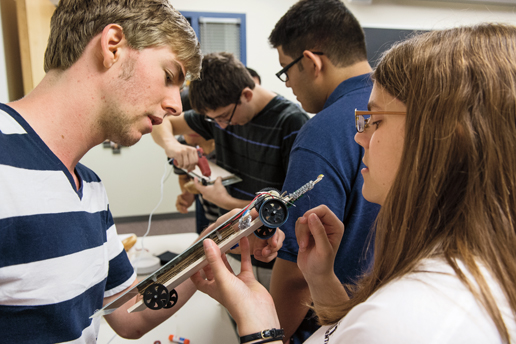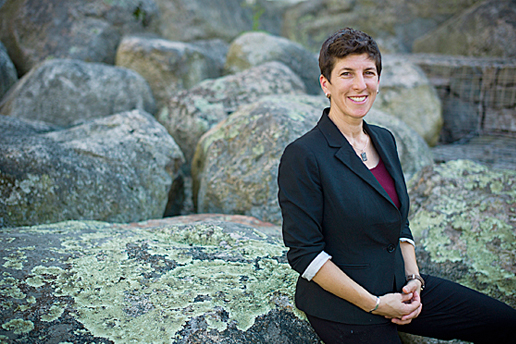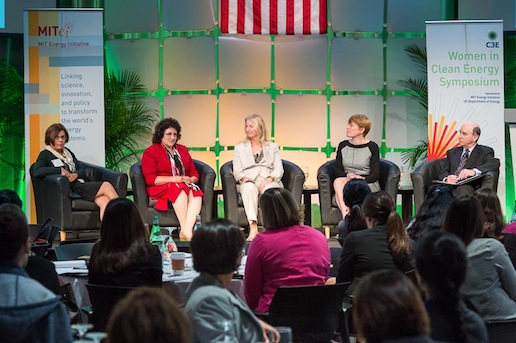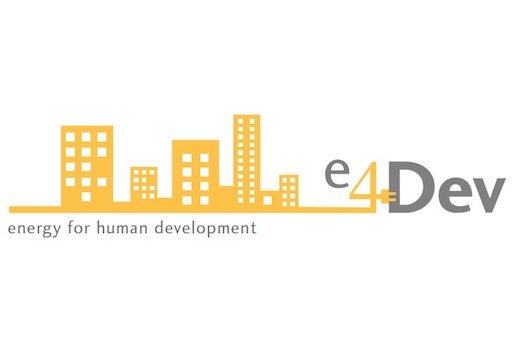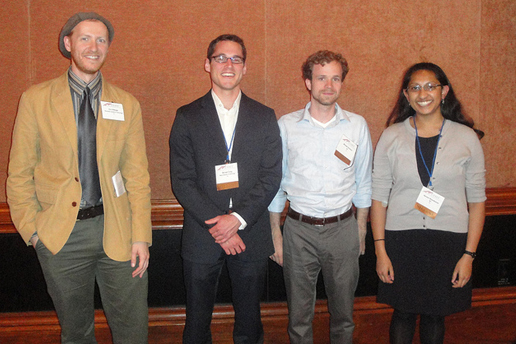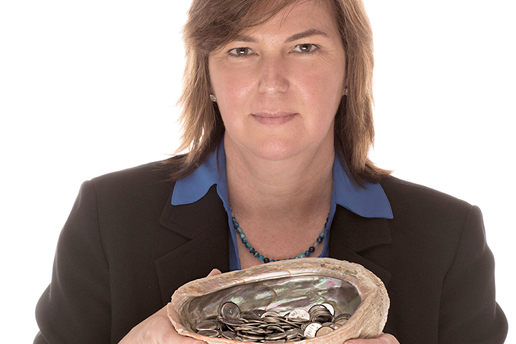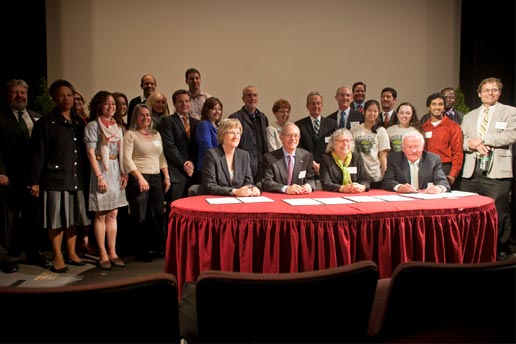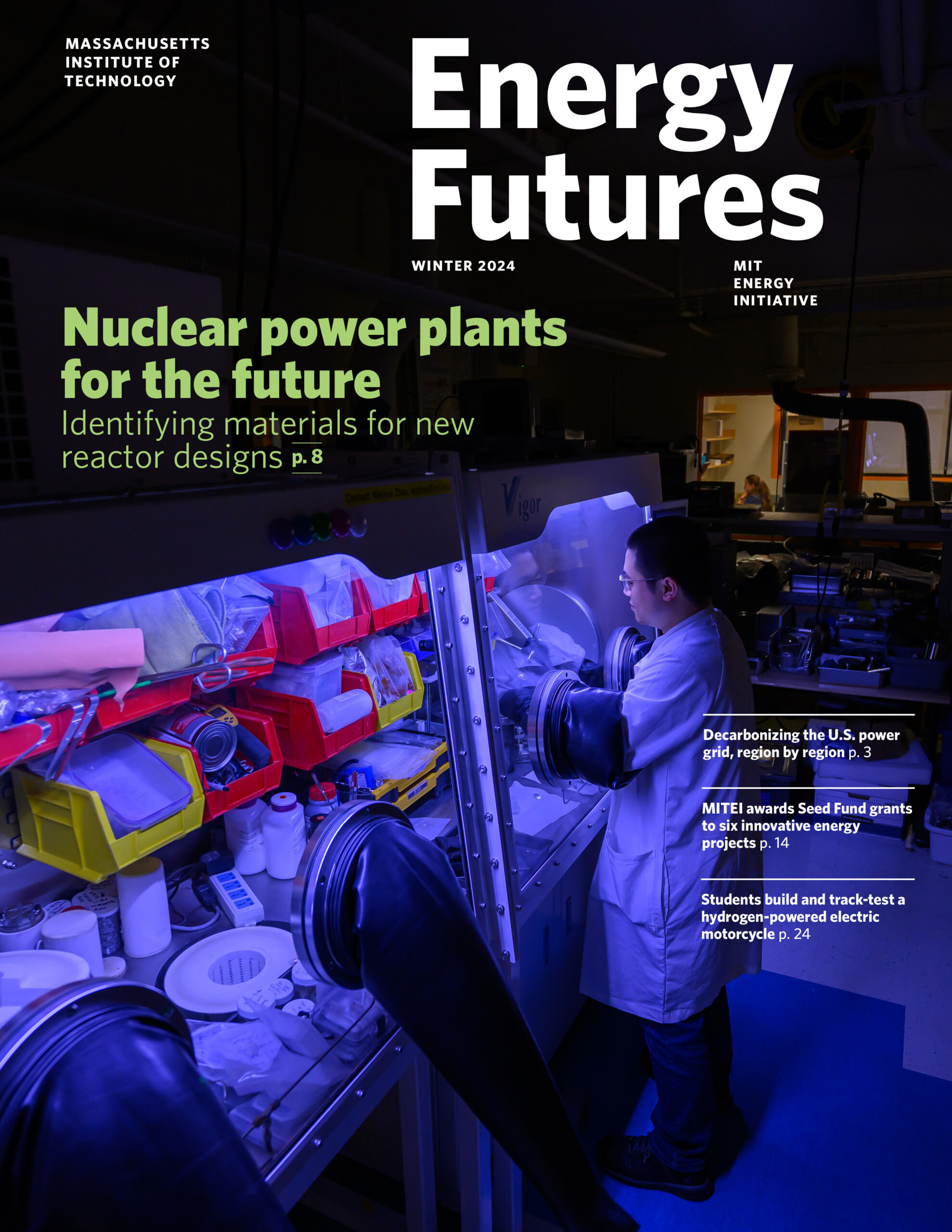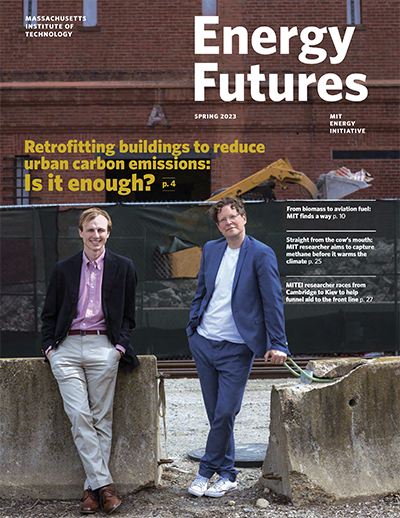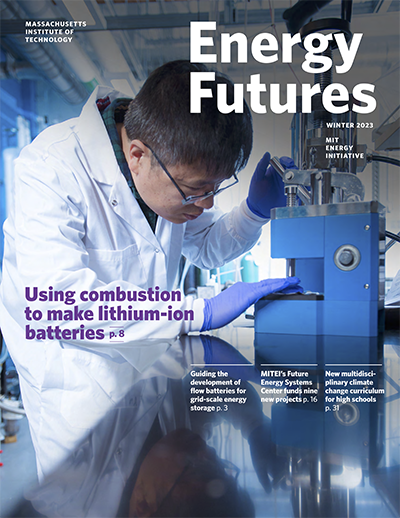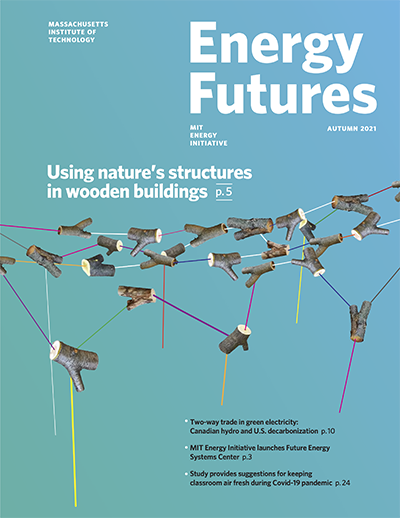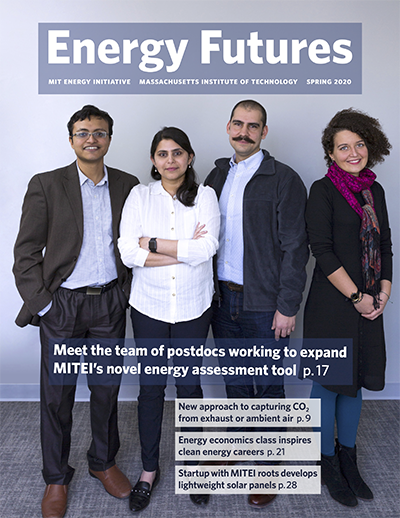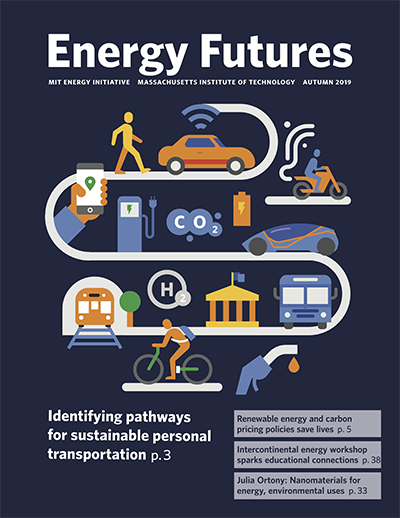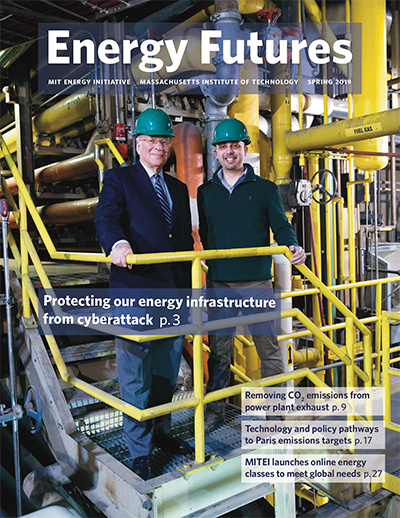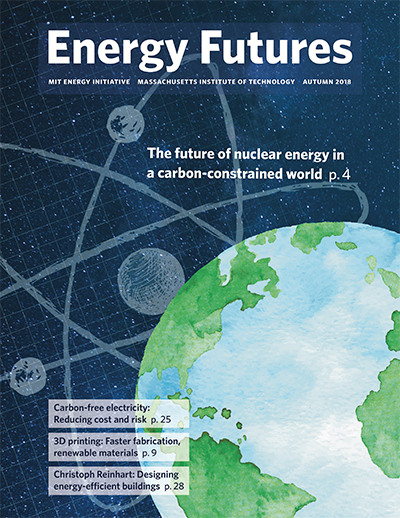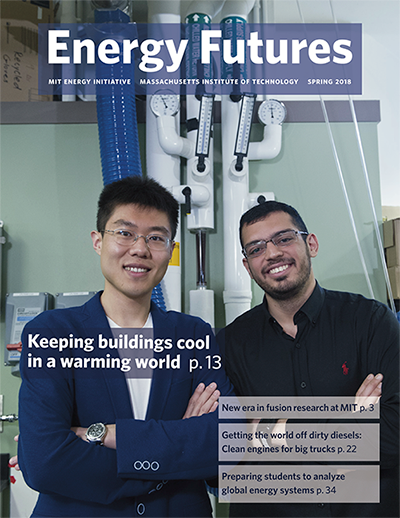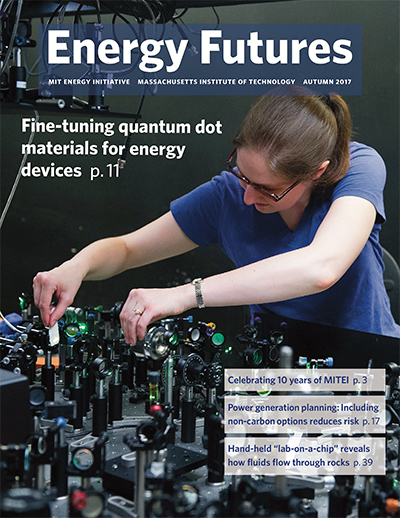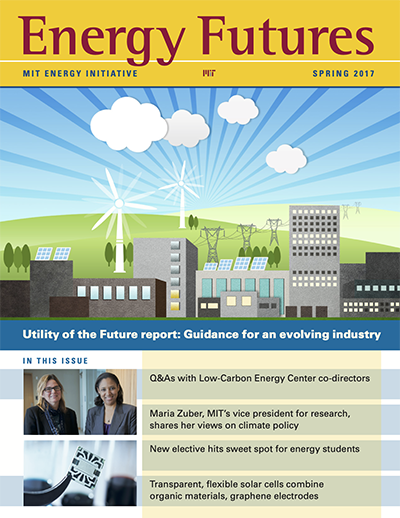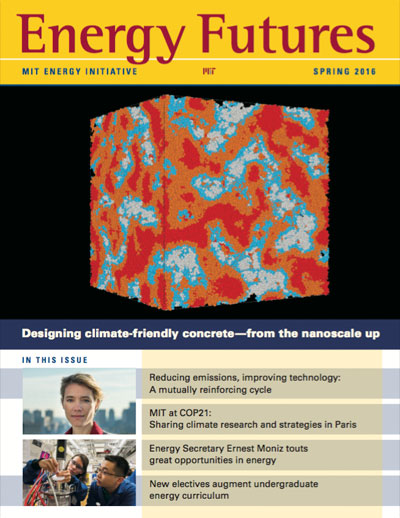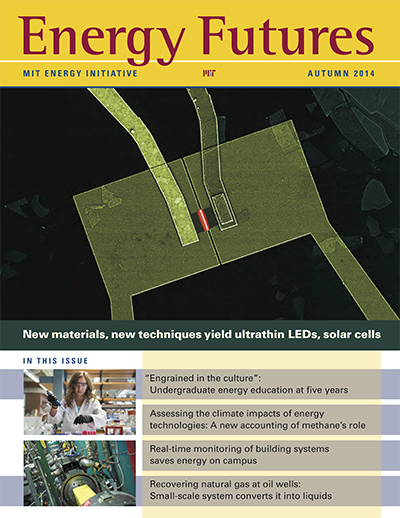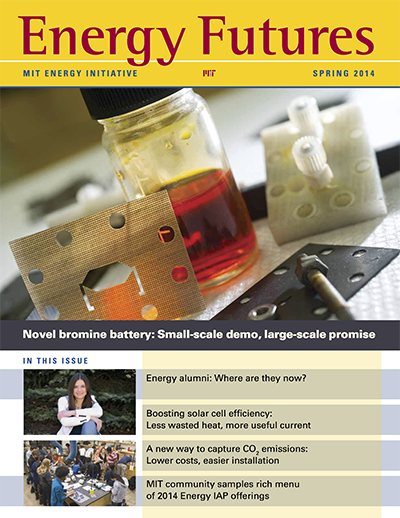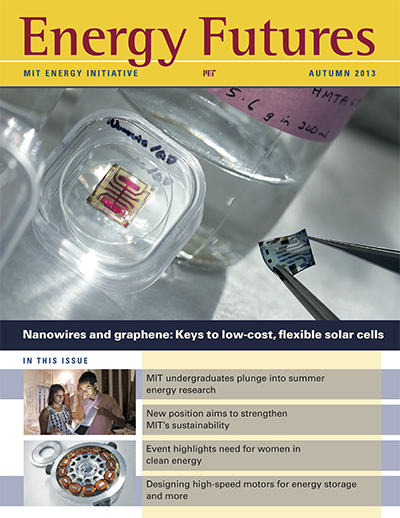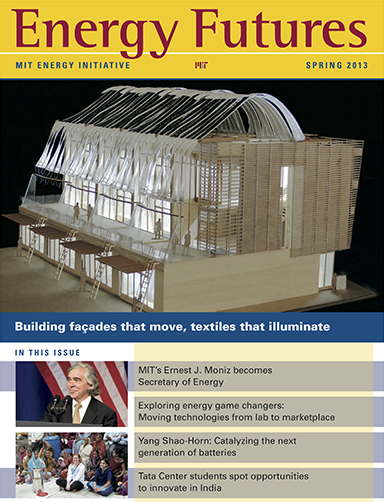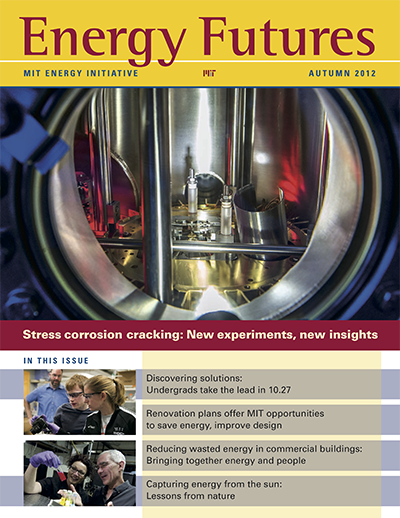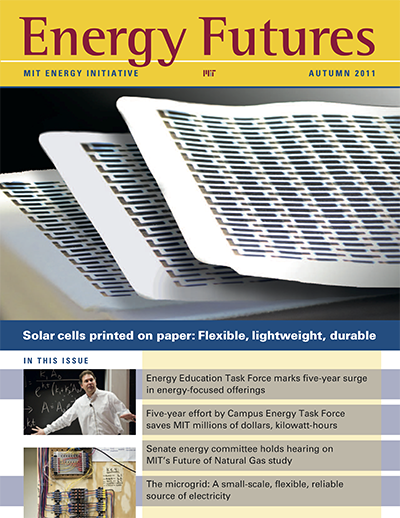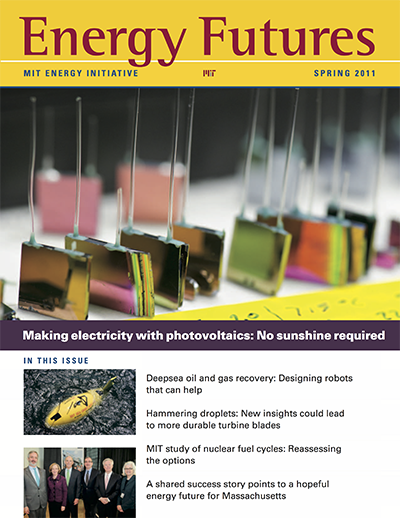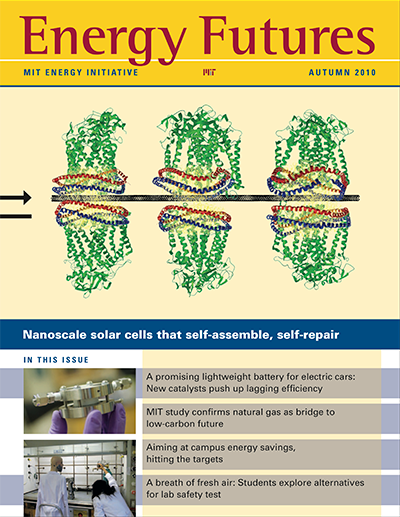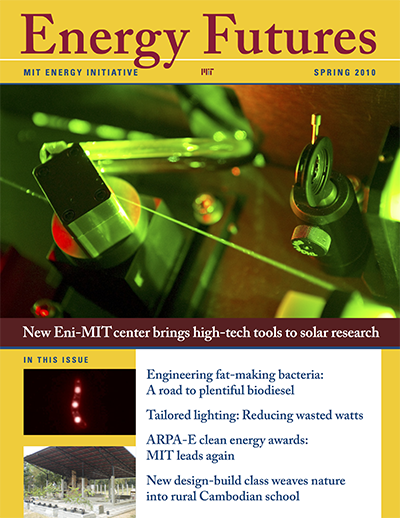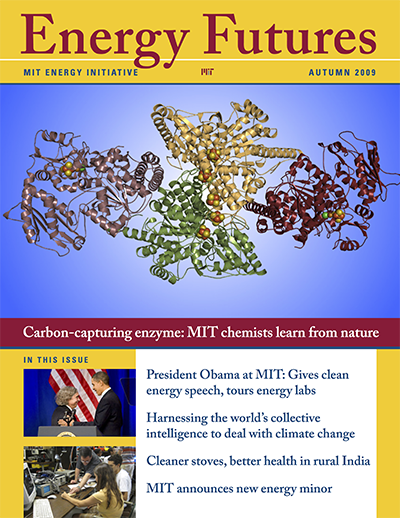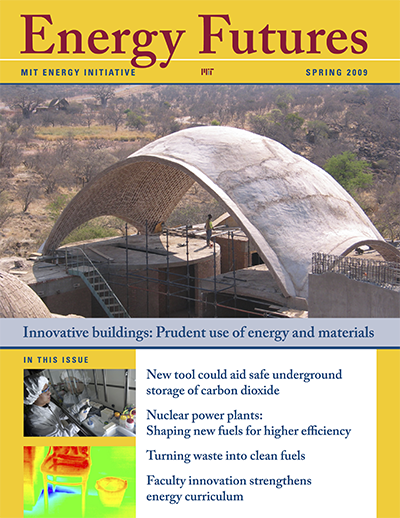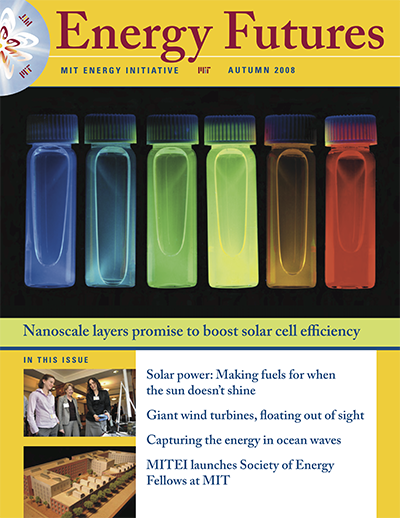Letter from the director
Dear friends,
As President Obama implements an “all of the above” energy policy agenda in Washington—with help from our friend and former colleague Ernest Moniz—we are working to implement an “all of the above” energy research agenda here in Cambridge.
In the short time since the last issue of Energy Futures, we have seen technology breakthroughs across the Institute. MIT researchers have designed thin, lightweight solar panels made from stacked sheets of one-molecule-thick materials. They have discovered highly active catalysts that could be key to improved energy storage in fuel cells and advanced batteries. They have devised a cheaper way to synthesize a critical biofuel component. And they have developed efficient, easy-to-retrofit methods of capturing emissions from power plants. The list goes on.
These innovations are certainly exciting. But they raise an important question: How do we bring our innovations from the lab to the marketplace? While MITEI’s members continue to help us identify critical research topics and transfer results to the energy marketplace, the Institute is taking this process one step further by placing new emphasis on the production of our innovations. This topic was addressed by the Institute-wide Production in the Innovation Economy (PIE) commission during a two-year study completed this past September. And it will be the driving force behind a new MIT initiative focusing on innovation.
Announced in October, the Innovation Initiative will encompass both innovation and production—activities that are “deeply linked and mutually reinforcing,” as the PIE commission demonstrated. Following MITEI’s example, it will connect interdisciplinary research with development and deployment by directly engaging stakeholders—from innovators and entrepreneurs to large corporations and policy makers.
MITEI is an appropriate model for the Innovation Initiative in many ways, but we can also act as its partner going forward. As we look to contribute to this Institute-wide endeavor, we will focus new attention on ways to improve advanced manufacturing and industrial processes. In particular, we will aim to increase energy efficiency to reduce costs and cut harmful emissions. We will also explore ways to scale the manufacture of energy systems and components to match the large-scale demand for energy.
We will work to make emerging energy technologies such as solar, wind, and other no- and low-carbon sources more competitive in the marketplace. As we continue to develop innovative devices and systems, we will place greater emphasis on ensuring that they can be produced using abundant, inexpensive materials and low-cost mass manufacturing processes.
Even when solar and wind technologies are economically competitive, their widespread deployment will require a means of storing the energy they produce to use when the sun is not shining and the wind is not blowing. There is already a critical mass of research across MIT addressing energy-storage systems, ranging from advanced batteries to fuel cells to flywheels. Now we will seek to leverage that work through enhanced organization and coordination that may accelerate its impact and reveal new opportunities for collaboration.
Until we are able to store clean energy at a large scale, we will continue to rely on natural gas as a primary energy source and as a backup source for renewables. Accordingly, we are working to develop new technologies that can help energy companies unlock the potential of stranded resources and manage fugitive emissions. In addition, we are examining the evolving nature of global natural gas markets as well as the relationship between natural gas and electric power in an era of growing use of distributed and smart grid systems.
To further expand our natural gas research portfolio across the Institute, we have encouraged researchers to submit proposals on that topic to our Energy Research Seed Fund Program—a program explicitly designed to encourage innovation by supporting early-stage research on a variety of energy and related environmental topics. To date, this program has helped to fund 118 projects, led by well-established energy experts and by new faculty who need startup support as well as by others who are applying their expertise in different fields to energy for the first time. Some seed grant recipients have gone on to attract additional public and private funding, while others have entered the marketplace aided by venture capital funding—a key step on the pathway to linking innovation to production.
Given the innovative spirit that pervades MIT, it comes as no surprise that students at the Institute also demonstrate creativity, coming up with ingenious ideas and inventions to address energy, environment, and health issues, especially in developing countries. Some of the most creative are recognized through the MADMEC, run each year by the Department of Materials Science and Engineering. This year, first prize went to four students who designed and built “Wristify,” a thermoelectric bracelet that monitors air and skin temperature and sends tailored hot or cold pulses to the wrist, warming or cooling the body and reducing the need for energy-consuming heat and air conditioning. Other MADMEC-winning technologies include a system of inexpensive, small LED lights that run on solar-powered, rechargeable batteries and can stick to any surface, and a novel polymer that can be applied to water filters to remove heavy metal ions, such as lead and mercury. These examples typify the unique technologies being developed by MIT students—technologies that often go on to be commercialized by the students through their own startup companies.
As MITEI continues to support the many energy-related activities of MIT’s faculty, students, and staff, I am delighted to announce an expanded leadership team to help us carry out our mission. The following individuals have taken on new or elevated roles at MITEI.
- Robert Stoner, deputy director for science and technology, previously served as MITEI associate director and continues as co-director of the Tata Center for Technology and Design.
- Martha Broad, executive director, joins us from the Massachusetts Clean Energy Center, where she oversaw programs and studies that led to the commercialization of clean energy technologies.
- Louis Carranza, associate director, was previously vice president for strategic development at IHS CERA.
- Francis O’Sullivan, director of research, has been at MITEI since its early days, most recently serving as executive director of the Energy Sustainability Challenge.
As MITEI continues to grow and strengthen, I can think of no better team to complement the Initiative’s already outstanding staff. Together, we will build on MITEI’s strong foundation and bold, interdisciplinary approach to deliver global energy solutions in an age of innovation.

Professor Robert C. Armstrong
MITEI Director
